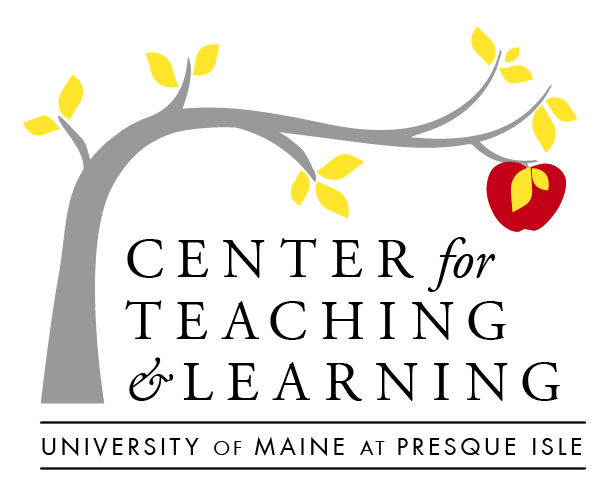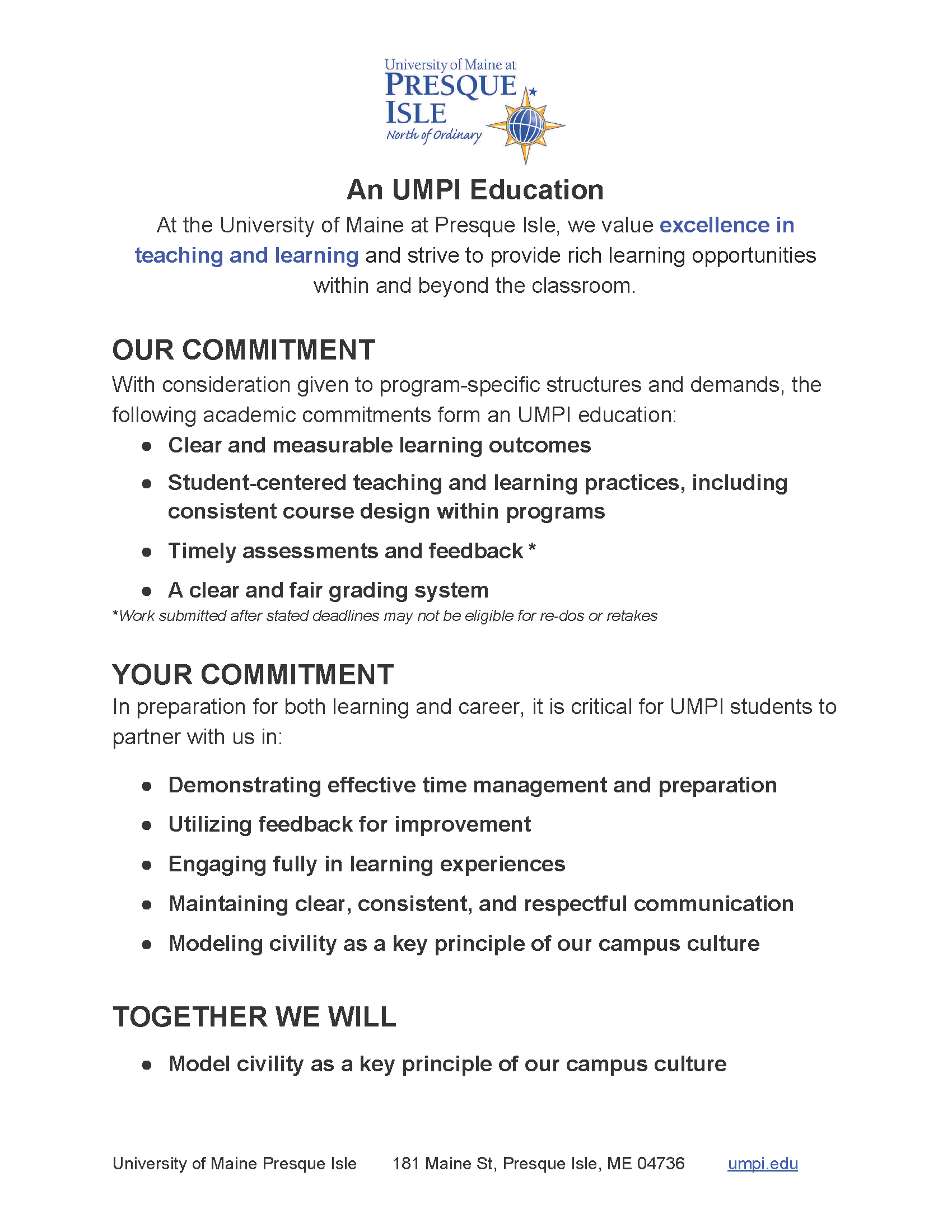What this looks like in our classrooms
- We provide clear and measurable Learning Outcomes:
- across courses and programs, Learning Outcomes are rigorous and relevant
- and our assessments and activities are clearly connected to those outcomes to create meaningful pathways to success
- We foster student-centered teaching and learning practices, including consistent course design within programs:
- by presenting content in a variety of formats to differentiate instruction and increase accessibility for diverse student learning preferences and needs
- by working to streamline and simplify how students access and use technology for learning
- providing multiple ways for students to demonstrate learning
- encouraging revision as part of the learning process, where applicable
- We value timely assessments and feedback by:
- creating multiple and ongoing, low-stakes formative assessments
- providing feedback in time to support the learning process and foster learning
- creating clear and regular communication expectations and pathways for students
- we maintain our commitment to provide feedback in the expectations we messaged in our syllabus and/or course communications
- We maintain a clear and fair grading system by:
- providing grading criteria and rubrics that clearly outline expectations and allow students to self-identify their progress across the Learning Outcome expectations
- pulling in the support team when students are at-risk of struggling, through the EAB Academic Reporting process
- valuing student demonstration of proficiency in Learning Outcomes

Alignment is a process, not an event
The ways that you honor the Academic Commitments will likely shift and grow–it will likely be more of an iterative process than a one-and-done event (and that is okay!). If you are looking to integrate more consciously with the Academic Commitments, we have a self-assessment tool that you can utilize to assess, adjust and communicate your practices!
What our Commitments may look like in action
Would you like to review what the Academic Commitments may look like, or are you looking for ways to purposefully incorporate practices that complement our Commitments?
Clear & measurable learning outcomes
- Describe specific knowledge, skills, behaviors, or dispositions that students should be able to demonstrate proficiency in as a result of their learning in the course
- State desired levels of academic performance
- Emphasize the application and integration of knowledge
- Are observable, measurable, and thus, assessable
Outcomes may be worded like:
Students Will Be Able To……
- Interpret, analyze, and solve diverse problems related to Human Anatomy and Physiology by using case studies
- Evaluate and assess the quality of 4 foundational elements of an analytic competitor
- Describe digital age learning theories in the context of learning theories, 21st Century Skills, and ISTE Standards
- Construct a mathematical model that incorporates important quantitative aspects of the situation and which makes accurate predictions.
Student-centered learning environments
- Focus of instruction shifted from instructor to student
- End goal of developing learners who are autonomous and independent
- Students take on a more active role in learning
- Blend of individual, collaborative and large group work
- Often includes project-based learning and/or experiential learning
- Involve real-world problem solving/ contexts – ex. case studies
- Multiple forms of assessment, feedback and demonstrations of learning
Student-centered learning environment may include:
- weekly Brightspace modules that give access to all needed materials
- opportunities for reflection on the learning process
- active learning activities, where students can take leadership roles
Timely assessments & feedback
- Assessments clearly aligned to stated learning outcomes
- Are clearly communicated on syllabi.
- Support opportunities to practice and refine before high-stakes (summative) assessments are given
- Multiple, ongoing low-stakes formative assessments that help adjust instructional pace and provide feedback to learners
Assessment and feedback expectations may include:
- Using tables in the syllabus schedule to align activities with Learning Outcomes
- Communicating clearly when and how feedback will be received
- Using the Grade Center in the LMS to regularly post grades and feedback
- Letting students know how long they should expect to wait for feedback on assessments
Clear and fair grading systems
- Criteria for success clearly communicated
- Helps students know their level of proficiency with all course outcomes
- Is aligned with UMPI Final Course Grade Policy Document, or the YourPace Final Grade policy (for CBE courses)
For an interesting read, check out Scott Habeeb’s New Terminology: Scoring v. Grading blog on The Assessment Network.

